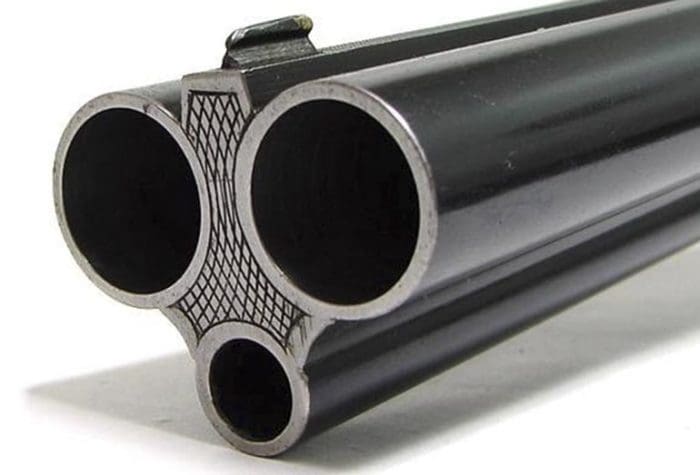An interesting type of firearm that’s almost unknown to the modern shooter but was formerly much more popular is the combination gun. These firearms are chambered for multiple types of ammunition. While there are good reasons to not own one – the modern gun owner has virtually no use for one – there’s still some demand for them.
Why does anyone care? Well, a gun that divides a lot of opinion, but still manages to sell pretty well are the .410/.45 LC revolvers such as the Taurus Judge series and the Smith & Wesson GOVERNOR. Magnum Research makes the BFR in this chambering as well, which is certainly much nicer to look at than the other two. While a point of contention, they are actually part of a lineage.
In that regard, the form has never quite left us, though combination pistols are a very small exception rather than the rule. The vast majority of combination guns have been long guns and almost always break-action. They’re usually used for hunting; you have the option to shoot almost any kind of game at any time.
The typical format is an over-under with the top barrel in smoothbore (often enough 12-gauge or – as it’s called on the other side of the pond – 12 bore) and the bottom barrel chambered for a rifle cartridge. Side-by-side iterations, often called a “Cape gun,” were popular with some hunters in Africa.
A very popular combination was a 12-gauge barrel for shot and .303 British rifle barrel, though plenty of other chamberings existed.
There was a similar design, namely Holland & Holland’s Paradox gun of the late 19th century. It was also called a “ball and shot gun” if made by someone other than H&H. However, they aren’t true combination guns as both barrels were the same size but had shallow rifling for using shot or slugs at the shooter’s leisure. They were best used at moderate ranges – around 100 yards – and the 8, 10 and 12 bore models were the most popular.
German gunmakers expanded on the design, creating guns known as drillings and vierlings, which are three- and four-barreled (“drilling” and “vierling” mean “triplet” and “quadruplet,” respectively) combination guns. The typical format was side-by-side or over-under shotgun barrels (12-gauge being most common) with a rifle barrel underneath or to the side of the shotgun barrels. Other configurations exist, but those are most common.
Vierlings offer even more versatility. Many designs feature two shotgun barrels, one centerfire and one rimfire rifle barrel, though – again – much depends on who made it.
There weren’t too many handhelds, but a few were made such as Lancaster pistols, which were four-barrel break-action pistols with a rotating striker mechanism. The way it worked was the striker/firing pin that fired rotated with each pull of the trigger. Usually, shallow rifling was employed so each barrel could fire either .410 gauge shot or .455 Webley rounds.
Carbine versions were briefly issued to British army engineers, and at least one rifle version was produced for the Maharajah of Rewa for hunting tigers. Lancashire pistols were found to be effective as Howdah pistols, so it was suited to the task.
The concept hasn’t entirely died out. While the combination guns and Paradox guns were certainly the province of Great White Hunters, there were some limited adopters in various militaries.
The Luftwaffe issued some drillings made by Sauer und Sohn (yep, the other half of SIG) to pilots in case they were shot down.
The American military cooked up the M6 Aircrew Survival Weapon for a similar purpose, a hammer-fired over-under survival rifle with a .410/.45LC top barrel and bottom barrel in .22 Hornet or .22 LR. These guns were based on the Marble Game Getter, a very similar design of firearm with a folding skeleton stock. The M6 rifles were issued from the 50s into the 70s, and some versions have been made for the civilian market by Chiappa, Springfield Armory and a few others.
Some high-end gunmakers still make drillings and vierlings, such as Italy’s FAMARS and Germany’s Johann Fanozj. Granted, these are handmade guns of exquisite beauty with price tags to match.
If you want to actually get a bit more out of the .410/.45 Colt platform, Rossi makes the Circuit Judge, a revolving rifle.
This is an interesting class of firearms with a small niche of their own, that will probably stay with us for the time being.
Sam Hoober is a contributing editor at Alien Gear Holsters, as well as for Bigfoot Gun Belts. He also writes weekly columns for Daily Caller and USA Carry.
